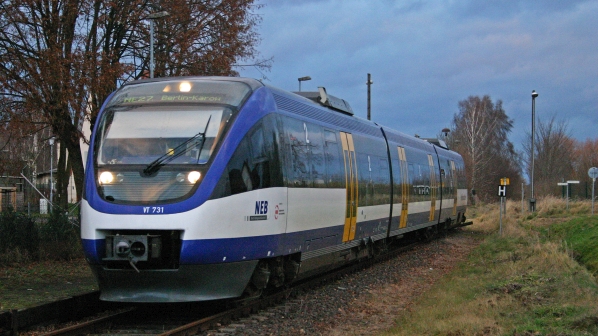A contract to undertake the detailed planning work for the re-opening, which is estimated to cost around €20m, was signed on January 10.
NEB owns the 14km line, almost all of which is already operational and is used weekly by Stadler to enable new trains to leave its Pankow factory. It has also been used at weekends by excursion trains since the 1990s to operate from the Wilhelmsruher Damm station just north of Berlin-Wilhelmsruh to Basdorf. Platforms and around 500 metres of track will need to be reinstated at Berlin-Wilhelmsruh before services can resume.
Eight new stations are planned between Berlin-Wilhelmsruh and Basdorf. The initial operating speed will be 80km/h.
NEB, which is partly-owned by local governments in Berlin and Brandenburg, and French National Railways (SNCF) subsidiary Captrain via majority owned Berlin Industrial Railway Company, is the infrastructure owner for the Berlin-Wilhelmsruh to Basdorf section
The long-term plan is to extend services south from Berlin-Wilhelmsruh south to Berlin Gesundbrunnen by 2028, but this will involve re-instating tracks on the eastern side of the existing S-Bahn alignment which have not been used since the Second World War.
The Berlin-Wilhelmsruh - Basdorf line was severed by the construction of the Berlin Wall in 1961. Prior to 1945, when the company was owned by the city of Berlin and local governments along the route, NEB had operated passenger services between Berlin Wilhelmsruh and Gross Schönebeck further north.
Unlike most other minor operators, NEB was not incorporated into the pre-war Deutsche Reichsbahn (DR). However, NEB was unable to continue operation after 1945 as the “new” DR had a monopoly on all rail operation in Berlin following the signing of the Potsdam Treaty between the occupying allied powers. DR therefore took over the NEB infrastructure. The “re-activated” NEB took over its old property in 1993.
The re-opening project forms part of the VBB sponsored i2030-Projekt to improve transport links in Berlin/Brandenburg.

